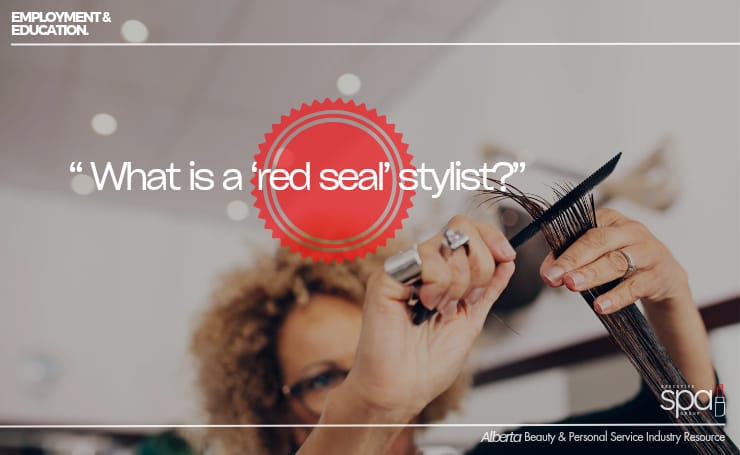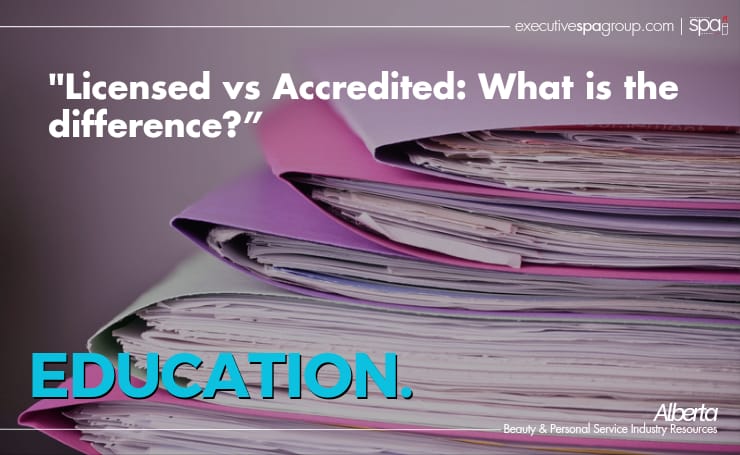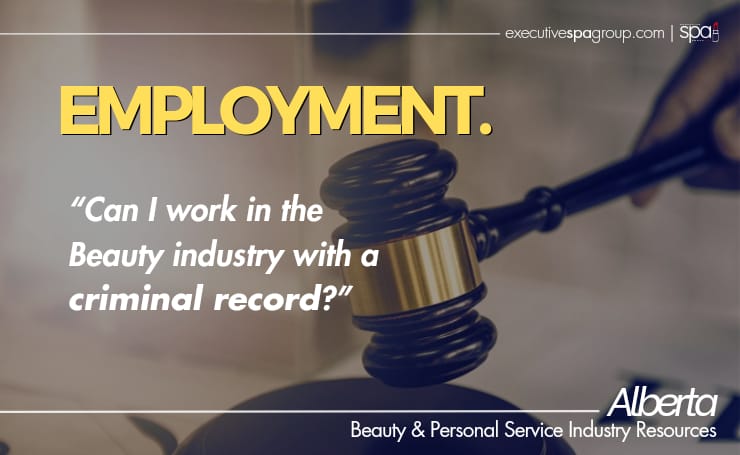alberta,employment,red seal hairstylist,red seal stylist
What is a red-seal stylist?

A little background information
Did you know that Alberta has over 50 designated trades? What sets these trades apart from other occupations is that they are directed by a board of directors who use the Skilled Trades and Apprenticeship Education Act to regulate the involved trades. This board consults with industry experts, for example, schools and employers, to establish and update certification requirements to meet the needs of employers (Tradesecrets, 2024).
The coolest amongst this group of trades is Hairstyling 😉 In the case of hairstylists, the board identifies the particular activities that hairstylists do, for example, cut, colour, perm, etc. These are called “restricted activities.” In other words, only people in the trade can perform those activities. Anyone performing or wanting to perform those activities must identify themselves either as a certified journeyperson, or as a sponsored apprentice with Apprenticeship and Industry Training (AIT).
This is done by either passing an exam to confirm that you meet industry standards, or registering as an apprentice after securing employment under the direct supervision of a certified journeyperson. You can also complete a designated occupational program, but then you still have to work the required hours, plus pass the exam.
Red Seal Endorsement
In Alberta, Hairstyling is considered a Red Seal Journeyman Trade. This means that hairstylists can earn a red seal certification after successfully passing an exam. The Red Seal Exam can be taken after proven certification based on education and hours worked in a salon.
Benefits of the Red Stamp of Approval
The Red Seal endorsement is recognized in Canada. Because it signifies higher standards have been met, employers look for it as an indication of the skill and competency level of potential employees.
Did you know?
In some trades uncertified individuals whose employers deem them to have the skills and competencies expected of a journeyperson are also authorized to perform restricted activities- hairstyling IS NOT one of them!
LIST OF REFERENCES
Tradesecrets 2024, accessed 21 May 2024, <https://tradesecrets.alberta.ca/trades-in-alberta/learn-about-designated-trades>.
Tradesecrets 2024, accessed 21 May 2024, <https://tradesecrets.alberta.ca/trades-in-alberta/profiles/0424>.
Tradesecrets 2024, accessed 21 May 2024, <https://tradesecrets.alberta.ca/trades-in-alberta/profiles/0424/scope-of-profession/#restricted>.
Tradesecrets 2024, accessed 21 May 2024, <https://tradesecrets.alberta.ca/become-certified/interprovincial-red-seal/>.
EXECUTIVE SPA GROUP
Beauty Industry Resource Centre
(780) 604-2772
info@executivespagroup.com





